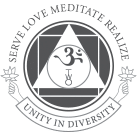Curriculum
Overview
Through the monthlong Sivananda Yoga Teacher Training Course, you will:
- Learn how to teach a 2-hour Sivananda Yoga class while gaining versatile teaching skills, including working with beginners as well as with intermediate and advanced students
- Explore different techniques for teaching unique populations, such as children, the elderly, and pregnant women
- Find greater flexibility and comfort in your personal practice of asanas (postures)
- Discover how to energize the body and calm the mind through the practice of pranayama (breathing)
- Maintain physical and mental purity through the practice of kriyas (cleansing)
- Learn about yogic diet and nutrition
- Study human anatomy and physiology
- Learn meditation techniques and theory and the practice of mantra repetition
- Practice selfless service
- Study the timeless teachings of the Bhagavad Gita and other ancient yogic texts, as well as yoga philosophy and yoga psychology
TTC Curriculum in detail
The goal of this training program is to produce qualified and inspiring yoga teachers who are able to draw on their own practice and personal discipline in imparting the yoga experience to others. The curriculum is based on the five points of yoga as taught by Swami Vishnudevananda, which can be understood as the practical application of the traditional four paths of yoga (Karma, Bhakti, Raja, and Jnana).
The intensive daily schedule includes:
- two meditation sessions
- two yoga classes
- two lectures
- one hour of Karma Yoga service to the ashram community.
One day a week is lecture-free.
Curriculum Topics
Asanas (yoga postures)
A daily teaching practice class is devoted to teaching you how to teach asanas and pranayama. A
daily asana practice class gives you the opportunity to practice your own asanas and will help to
build the good habit of practice.
The daily in-depth practice with individual corrections comprises:
- Sun salutation
- 12 basic Sivananda Yoga postures
- 100 asana variations, from intermediate level to advanced
- Postural alignment
- Deep relaxation with autosuggestion
- Release of blocked energy
- Training sessions for all age groups
Benefits of asanas
- Control emotions
- Improve power of concentration
- Rid the body of excess fat
- Enhance physical fitness
- Relieve chronic ailments such as constipation, rheumatism, stomach complaints
- Stimulate circulation
- Stabilise thyroid functions
- Keep muscles youthful and supple into old age
Benefits of pranayama
- Expands capacity of the lungs
- Relaxes the nervous system
- Balances the two hemispheres of the brain
- Purifies the nadis (subtle energy channels)
- Awakens the inner spiritual energy
- Kapalabhati (lung-cleansing exercise)
- Anuloma Viloma (alternate nostril breathing)
- Ujjayi, Surya Bheda, Bhastrika, Sitali, Sitkari, Bhramari
- Samanu (mental cleansing of the nadis)
- The three bandhas: jalandhara, moola, uddiyana
Kriyas
Tratak, Neti, Kapalabhati, Dhauti, Nauli and Basti: six classical purification exercises for the
eyes, nose, air passages, oesophagus and stomach, abdominal organs and large intestine.
Explanation and demonstration of the exercisesand their effects. Individual instruction.
Yoga anatomy and physiology
- Introduction to the major body systems
- The effects of asanas and pranayama on: the cardiovascular system, respiration, digestion, skeletal and muscular
systems, endocrine system - The eight systems of the body
- Yoga and physical culture
- Diet and nutrition
Karma and Reincarnation
- The law of action and reaction
- The law of compensation
- The law of retribution
- Destiny and self-effort
Teaching practice
- How to teach the 12 basic postures and breathing exercises to beginners and intermediate students
- Setting up of a proper environment for class
- General pointers on teaching a class
- The Basic Sivananda class
- Beginners’ course
- Advanced postures
- Yoga for children
- Yoga for older citizens
- Yoga for pregnancy
- Relaxation
- Detailed correction workshops
In the second half of the training course, participants will teach each other under the guidance of an experienced instructor.
Yoga nutrition
- Vegetarianism for ethical, spiritual and health reasons
- How diet affects the mind
- Proper balance of the main nutrients
- Ayurvedic principles of nutrition
- Healing effects of fasting
Meditation
- Guide to meditation
- What is meditation
- Why meditate
- Physical and mental meditation
- 12-step daily practice
- Effects of and experiences in meditation
- Mantras, spiritual energy in sound
- Mantra initiation (if desired)
Hatha Yoga
- Ethical and moral principles
- Body, prana (life energy) and mind
- From control over the body to control over the mind and meditation
Raja Yoga
- Ashtanga: the 8 steps of yoga
- Antahkarana: functions of the mind
- Concentration and meditation
Kundalini Yoga
- The Absolute and how it manifests itself in nature
- Macrocosmos and microcosmos
- The 7 Chakras
- The awakening of cosmic energy
Bhakti Yoga
- Kirtan: chanting of classical Sanskrit mantras
- Indian gods and their cosmic meaning
- Arati and Pujas (traditional Indian rituals)
- Chanting opens the heart and purifies the mind. With daily chanting, you develop a strong feeling of devotion and a very pure vibration. In devotional chanting correct pronunciation, devotional attitude and awareness of meaning are all-important.
Karma Yoga
- Karma yoga is the practice of selfless service and helps to reduce selfishness and egoism and keeps you fit and healthy and gives immeasurable joy.
- You will be asked to do various tasks with in the ashram setting including gardening, cooking, cleaning, office work and any other work necessary for the smooth running of the community.
- The law of cause and effect
- Samsara, the wheel of birth and death
- Karma Yoga – selfless service: one hour daily in the ashram community
Jnana Yoga
- Basic concepts of Vedanta philosophy
- The 7 Bhoomikas or planes of consciousness
- Space, time, causation
- The 3 bodies
- The 3 levels of the mind
- Conquest of death
Bhagavad Gita
- Considered one of the greatest spiritual texts of the world, the Bhagavad Gita contains subtle and profound teachings and has a universality which embraces every aspect of human actions. It symbolises the solution of the eternal struggle between the spiritual and the material in every human being.
- Study of both the text and Swami Sivananda’s commentary.







